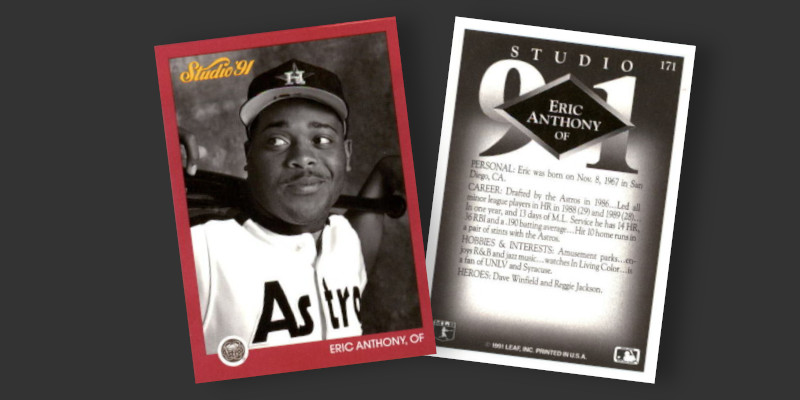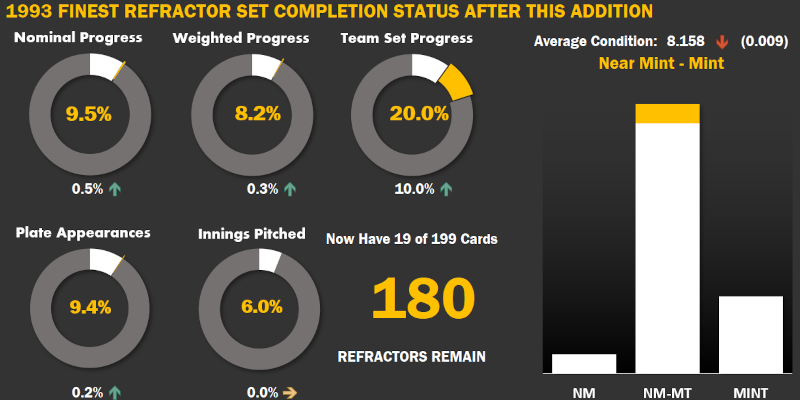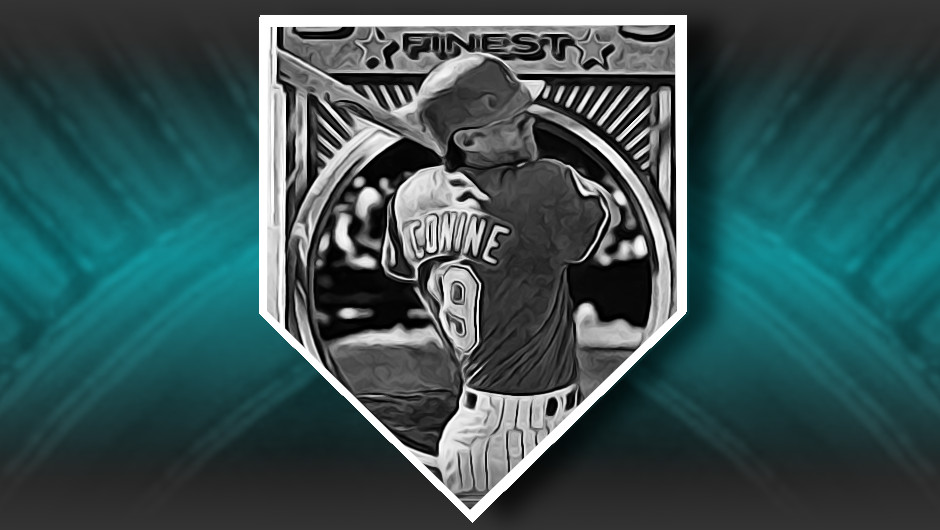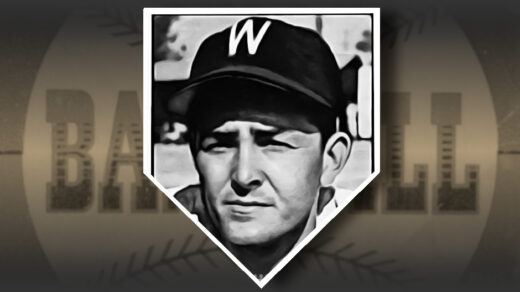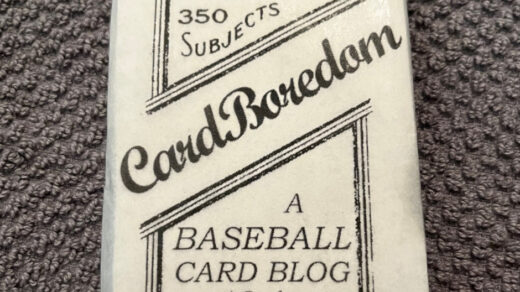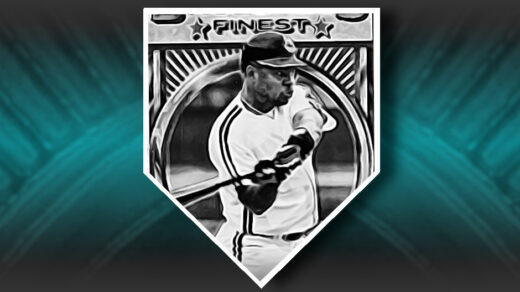When I was a kid, I had zero concept of the huge number of organized leagues that chew up and spit out prospective ballplayers before they become professionals. I thought future major leaguers simply sign up with a little league or high school team and perform so well that crowds begin to follow their progress. Attention attracts scouts who chew tobacco and talk about things like “hustle” and “grit” before slyly dropping hints that their team would hold tryouts to fill open roster positions. Do well enough at a tryout and you get a spot in the lineup, it’s that simple.
That’s a fantasy world that doesn’t exist.
Instead, there is a grueling series of increasingly expensive travel teams, camps, and exhibitions that prospects are expected to endure. Very few make it, and despite similarities to running a gauntlet this whole process could be described as the easy way to get to the big leagues. At least with this method there are eyes on players and a hint of interest from the fringes of the scouting world. Trying to get signed by any other method is a million times harder.
Houston resident Eric Anthony didn’t get the message. A high school dropout who told interviewers his hobby is watching television, he took time out from a manufacturing job to bluff his way into a tryout at the Astrodome. He made the most of his chance, repeatedly lining balls into the stands in what was widely considered a pitchers’ ballpark. The Astros signed him with the 795th pick of the 1986 MLB draft, indicating just how far he still had to go before tasting major league pitching. Anthony’s long-shot tryout eventually led to two straight years of leading the minor leagues in home runs.
There’s no doubt he could hit the long ball. It was just any other kind of hitting that was a mystery for Anthony. He was a three true outcome player, hitting a home run, drawing a walk, or whiffing in a strikeout more than 35% of the time he came to the plate. The Astros gave him regular at bats in the early 1990s and he responded with respectable home run totals and an occasional batting average over the Mendoza line. He showed flashes of potential, prompting Topps to place him in the 1993 Finest set. In 1990 he checked a swing and still managed to bounce the ball off the 380 foot sign in San Diego.

Anthony’s career arc eventually saw him traded to several teams where he served in platoon outfield assignments. His numbers actually improved in later seasons but by this point teams were giving up on seeing much more progress. He last played in the majors in 1997 and continued for a few additional years in Japanese and Mexican ball.
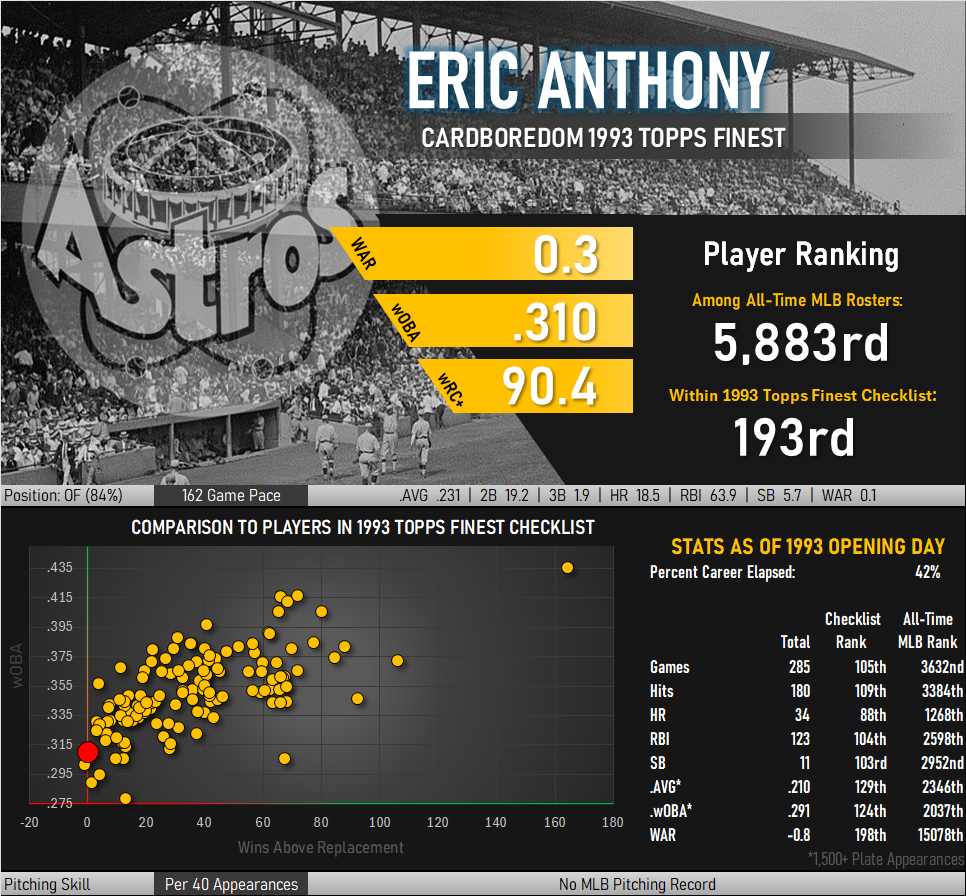
Another Eric Anthony Card Worth Exploring
I’ve always loved the Studio series of cards published by Donruss/Leaf in the 1990s. The photography is excellent and there is always some sort of oddball fact sure to come out in the biographical text on the reverse. I remember getting this card as a 9-year-old, reading the back, and thinking that I too love amusement parks. There are several ellipses in the hobbies & interests section. Perhaps this is a style element, or maybe Eric Anthony had a longer list of pursuits in mind that were cut down in the editing process. I wonder if he ever met Reggie Jackson or Dave Winfield, the pair he mentioned as being his heroes.
